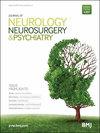POST-TRAUMATIC PAIN AND THE CAUSALGIC SYNDROME.
引用次数: 172
Abstract
IT is not uncommon, especially in wartime, to be faced by patients complaining of persistant severe pain in the hand or foot following an injury to a limb, despite the absence of apparent cause. It is with such cases that the present paper is concerned. Excluded from consideration are cases in which post-traumatic pain arises from tender neuromata or obvious vascular abnormalities. Weir Mitchell (1872) dealing particularly with injuries involving nerves used the term causalgia for this condition, and though describing many examples that have become classical he did not rigidly define the term. Indeed Homans (1939) suggests that a considerable number of states have been at one time or another included under this term and such a view is supported by ideas developed elsewhere (Doupe and Cullen 1943). On the other hand, it would seem that cases of causalgia have been described under a variety of other names. This tendency to dispersion in the literature has been noted, both by Homans (1939) and de Takats (1943), and they have been tempted to counteract it by grouping many of these conditions together. In Table I it will be seen that there is a disparity in the conditions so grouped by these two authors and that the cause of this disparity appears to lie not only in the redundant terminology but in different conceptions of the genesis of the condition: Homans stressing the part played by reflex arterial spasm while de Takats is impressed by the element of vasodilatation.创伤后疼痛和致痛综合征。
本文章由计算机程序翻译,如有差异,请以英文原文为准。
求助全文
约1分钟内获得全文
求助全文

 求助内容:
求助内容: 应助结果提醒方式:
应助结果提醒方式:


